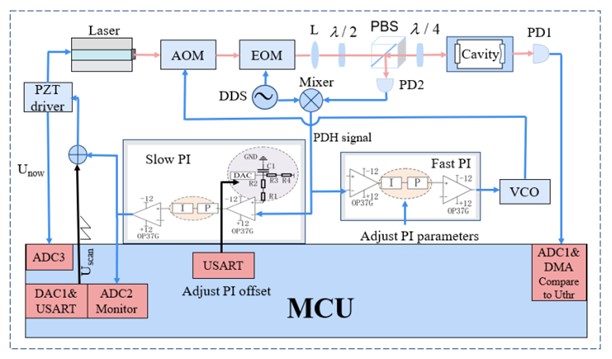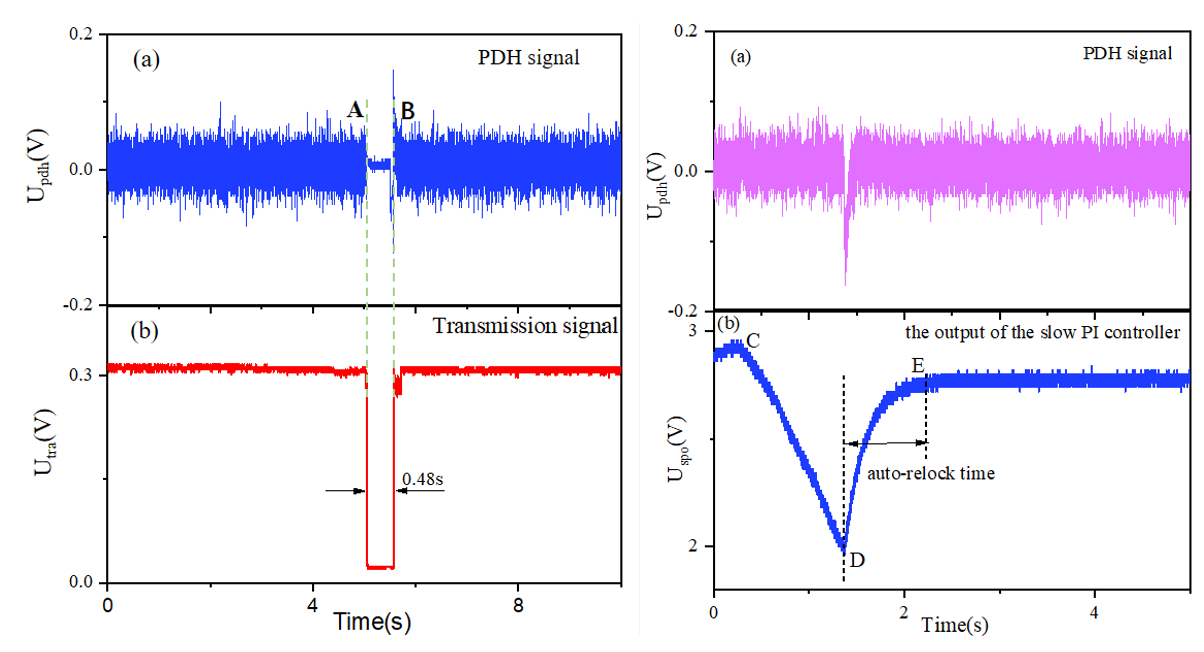Recently, a research team led by Prof. LIU Tao from the National Time Service Center(NTSC) of the Chinese Academy of Science (CAS), proposed an algorithm for the auto-relock of ultra-stable lasers.
This algorithm is capable of separately addressing the loss of lock caused by frequency drifts and shocks respectively. Compared to previous work, the relocking time has significantly improved. A comparison of two similar ultra-stable lasers shows that the fractional instability frequency is about 5.84×10-15 at 1 s averaging time and the linewidth is approximately 1.5 Hz.
The achievement is published in Infrared Physics & Technology.
Ultra-stable lasers will lose lock due to frequency drifts and shocks during long-term operation. The special unmanned environment of space science tasks such as onboard atomic clocks and gravitational wave detection requires ultra-stable lasers to possess fast auto-relock capabilities.

Fig.1. Simplified block diagram of the PDH laser frequency stabilization with an auto-locking system.
This study, based on embedded platforms and servo systems, automatically locks the laser onto an optical reference cavity. The experimental system diagram is shown in Figure 1. The experiment simulates the loss lock caused by frequency drifts and shocks, and auto-relock is achieved using methods of re-finding the lock point and pre-correction. The transmission peak signal and the PDH signal under the two methods are shown in Figure 2. The auto-relock algorithm achieves a relock time of 0.2 seconds.

Fig.2. PDH signal and transmission signal during the auto-relock process. (left)shocks cause unlock (right) frequency drifts cause unlock
The ultra-stable laser, serving as the light source for scientific tasks such as optical atomic clock comparisons and fiber-optic optical frequency transfer, provides a reliable guarantee for the stability of such tasks through its fast auto-relock capability.
CONTACT:
XIONG Tiantian
National Time Service Center, Chinese Academy of Sciences
gjhz@ntsc.ac.cn
 Print
Print